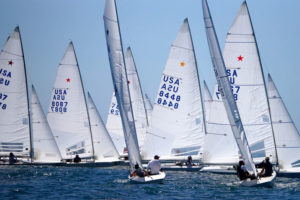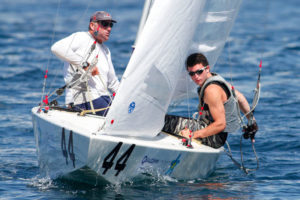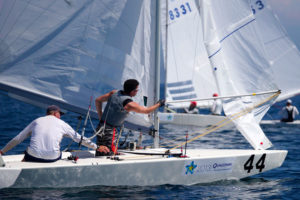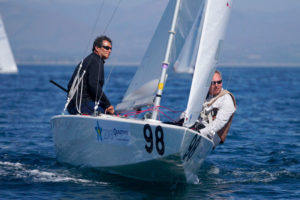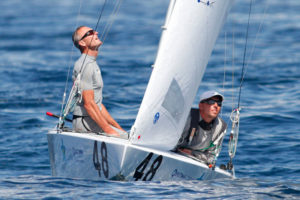Rohart and Pulfer battled through several large wind shifts and inconsistent pressure thoughout the race and took the lead of the fleet on the final leg of the 10 mile race.
Race 3 of the Qualcomm 2013 Star World Championship put the Race Committee and the Star sailors’ skills to the test. The Race Committee was challenged with the difficult task of setting a square line and course in the very unsettled westerly breeze. Race 3 was postponed at 1220 hrs and the first warning signal of the day was not fired until 1340 hrs.
The eager fleet was aggressive on the starting line and with the majority of the boats over early, regatta PRO Bill Stump ordered a general recall. Following the general recall, Stump squared the starting line better to the breeze in preparation for the next start. Shortly thereafter the Race Committee began a second starting sequence and the fleet was once again too aggressive and drew another general recall prompting a black flag.
Finally, the third attempt to start race 3 was successful. The fleet was all clear off the line and headed for the windward mark in a very light and spotty breeze. Throughout the rest of the race, the Race Committee continued to monitor the unstable wind and made every necessary adjustment to ensure the sailors had a fair race.
Race 3 according to today’s winner Xavier Rohart, “It was a very exciting race on the 3rd day of the Qualcomm Star Worlds. The weather was pretty light, with patch of winds. Because of thermal wind and the sea breeze everything really unstable. But it picked up during the race, especially on the downwind legs because it was difficult to avoid the wind holes. But it was the gate, every time, the leeward gate that creates the situation that you can overlap the people. So we rounded the first upwind marker 4th and managed to keep our speed downwind and overlap people on the leeward gate.
“The final decision was on the last downwind, which side of the course would be favored. They (Ledbetter/Morton) chose to go more offshore, we decided to play the right, and we succeed to have pretty good wind and nice angles at the end.
“Our strategy is always the same. It’s very, very important to be in the front row at the start, and to be able to get to the right on the upwind. That’s the basics and this strategy has played out very well.”
